Jumieges - Abbaye de Jumieges
Most iconic and historically significant monastic ruins
The Abbaye de Jumieges is one of the most iconic and historically significant monastic ruins in France. Located in Normandy, along a meander of the Seine River not far from Rouen and Le Havre, it was founded in 654 by Saint Philibert during the reign of Clovis II. From its inception, it became an influential Benedictine abbey and was deeply connected with the Carolingian and then Capetian ruling dynasties. Its early prominence is linked to its strong ties with the Frankish nobility and its extensive land holdings.
Click here to see where the abbey is located on Google Maps.
Click here to read our introduction to the town of Jumieges.
The abbey faced severe devastation in the 9th century during Viking raids, a fate common to many monasteries in northern France. However, it was rebuilt in the 10th century under the patronage of Duke William I of Normandy, who initiated a major reconstruction in 942. This laid the groundwork for the Romanesque structure that followed.
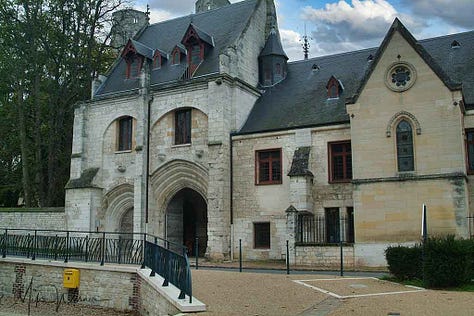
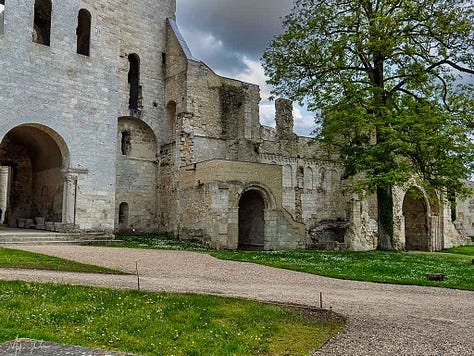
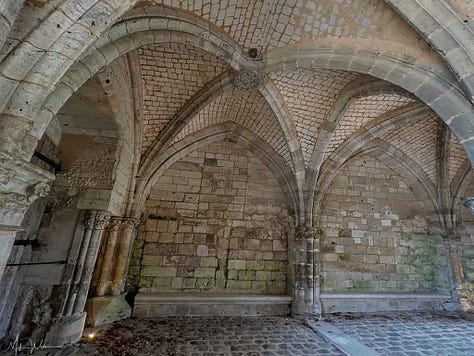
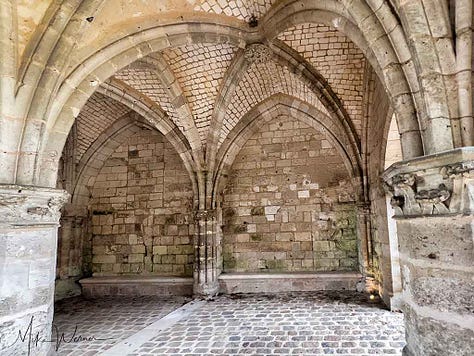
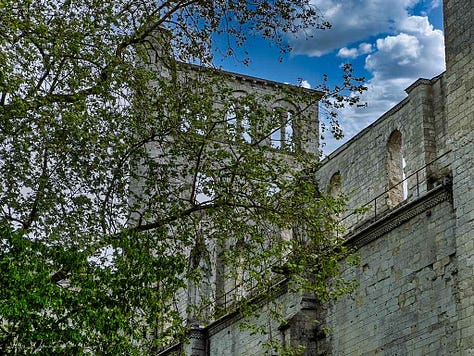
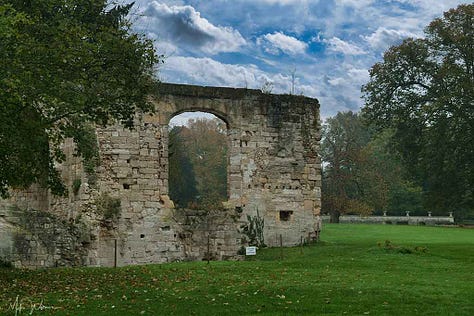
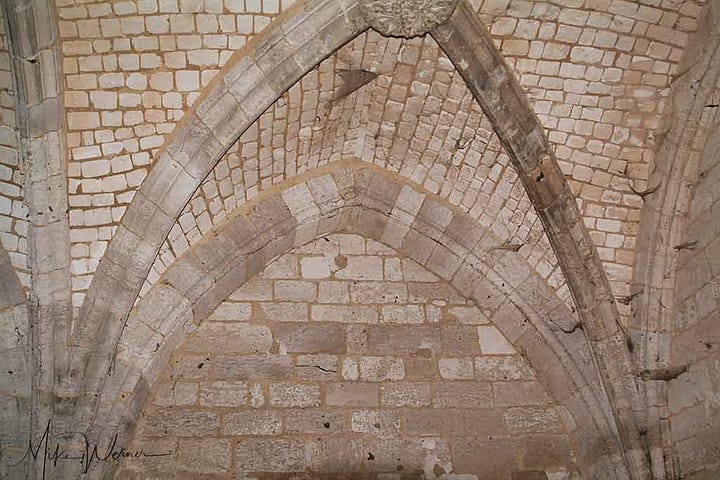
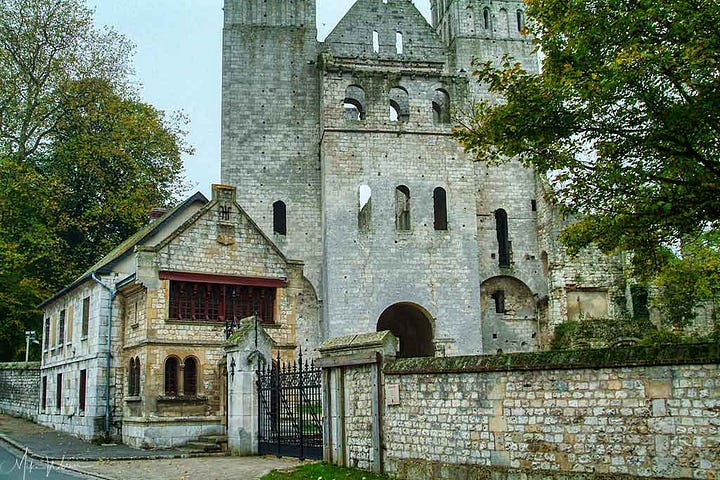
The most spectacular rebuilding occurred in the 11th century, culminating in the consecration of a new church in 1067 in the presence of William the Conqueror. This church, dedicated to Saint Peter, is one of the earliest examples of Norman Romanesque architecture on a grand scale. Its façade with twin towers and massive nave remain among the best-preserved features, despite the abbey’s later ruin.
In the 13th century, the abbey was again enlarged and enriched, but it suffered damage during the Hundred Years’ War and underwent cycles of decline and restoration. By the 16th century, although still functioning, its spiritual and cultural influence had waned. The abbey was dissolved during the French Revolution, and much of its stone was quarried for local construction.
What remains today is a haunting and majestic ruin, particularly the west front and the towering walls of the nave, which rise dramatically above the surrounding landscape. The abbey is celebrated not just for its architectural grandeur but also for the romantic quality of its ruins, which have inspired artists and writers since the 19th century, notably during the Romantic era.
Today, the site is open to the public and is a major historical and cultural landmark in Normandy.
Over the years, many artists have been making paintings of the Abbey. Here are but a few:






